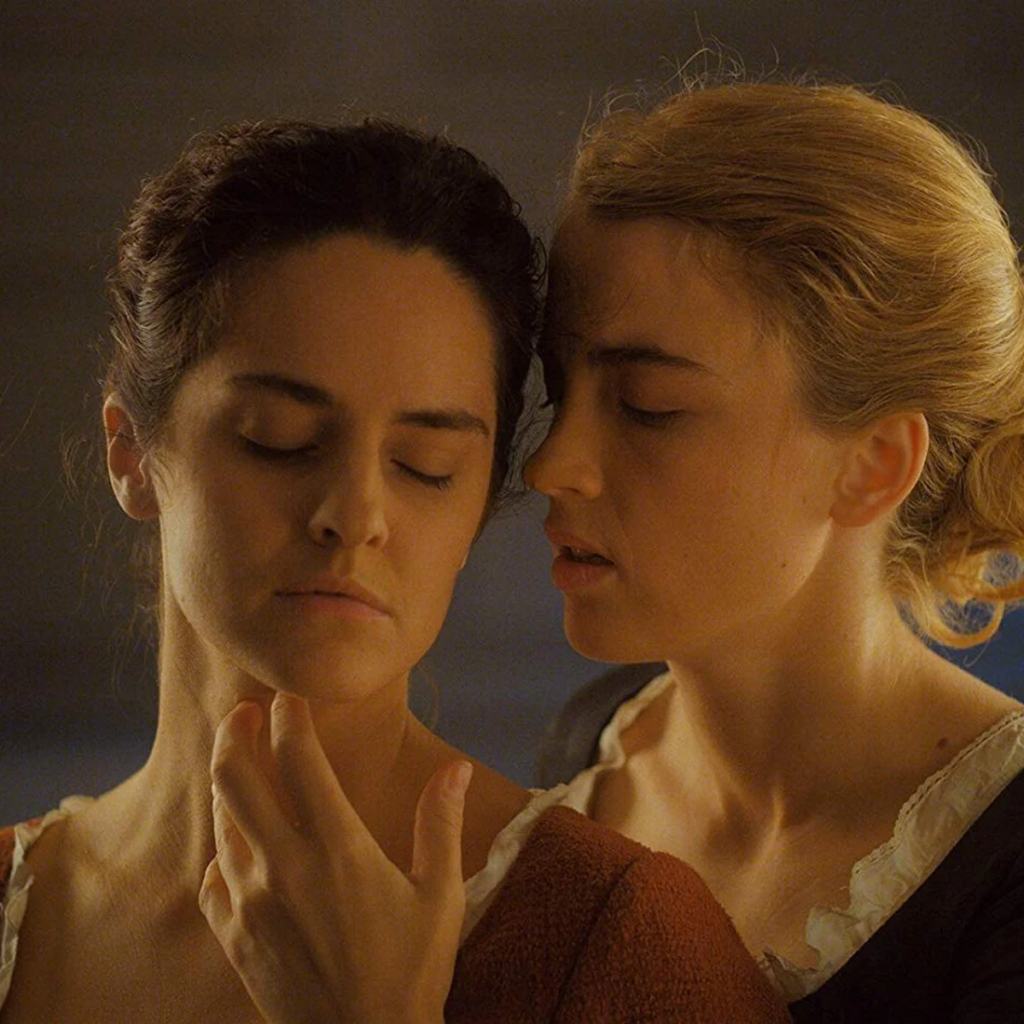One of the first aspects of Portrait of a Lady on Fire that caught my attention was how vibrant the colors were in the film. Psychologically, humans are more likely to remember their memories to be more vibrant than how they normally see, so in my opinion this could’ve been an artistic choice made to contribute to the film’s themes of memory and longing.
Going off of the theme of color- one of the most striking features of the cinematography in this film is the use of light. Claire Mathon creates contrast with her use of warm candle-lit interiors and cool natural lightning outside, the light aligning closely with the characters’ emotional states. The warm glow of the candles during night scenes creates a sense of privacy and intimacy- emphasizing Marianne and Heloise’s closeness. In contrast, the cold daylight highlights the other side of their relationship, the side that is fragile and fleeting.

The framing of the shots in the film is also essential to its visual storytelling. Many of the scenes are framed to almost resemble paintings- not only making the movie aesthetically pleasing, but also adding to the old time context of it. The usage of wide shots- especially for Heloise go on to emphasize her loneliness- especially during shots where she is surrounded by the beautiful landscape. Seeing her stand alone in the beautiful landscape highlights her emotional state perfectly, underscoring the barriers between the beauty that she wants (Marianne) and herself. The use of close ups is also done meticulously, mostly being done during moments of intimacy- adding onto the emotional impact of the scene
Overall, watching this movie really felt like I was in the mind of the characters and was reminiscing my beautiful yet haunting memories with someone- and this level of relating was due to the cinematography, framing and overall mise-en scene of the movie.
I really enjoyed your analysis on the color theory and lighting of the film. To me, one of the most startling visual parts of the movie is when the shining apparition of Heloise appears to Marianne in the middle of the night. Expressionless and wearing a decadent wedding dress, the figure of Heloise appears drained of color and lifeless. The bright white of the dress outshines all of her features, making her ghost-like and haunting. Reflecting upon your points about memory, the faded color palette could represent a memory that Marianne does not want to remember fondly: the official end of her love affair with Heloise. In a more literal sense, it may also be a premonition of her final interaction with Heloise, a moment that haunts her for the rest of her life as they cross paths in the future.
I also thought that the story being told in the form of a memory was very intriguing. We were looking at the story from the perspective of the painter’s memory which I think contributed to the emotion depicted in the film. It was a happy yet painful memory for the painter which is shown in the film by the framing, color, and powerful emotion. The fact that humans tend to remember things more vibrantly was something I thought was very interesting to point out. The connection you made between the vibrant colors in the film and that being a result of it being a memory was something I didn’t think of but really makes a lot of sense. You also brought up the contrast of the lighting in this film, comparing the cold outside lighting to the warm inside lighting and how that resembles their relationship. I noticed throughout the movie that a lot of the lighting was from a fire source, whether its a candle, a fireplace, or an actual bonfire. I thought this was an interesting connection, considering the title of the movie and the portrait. Fire seemed to be a motif throughout the film because it kept reappearing. Additionally, I thought your commentary on the framing was very insightful and the point you made about how many shots in the film resemble paintings was a good connection. I thought the film had a lot of close-ups and medium close ups which helped it feel more like a painting.